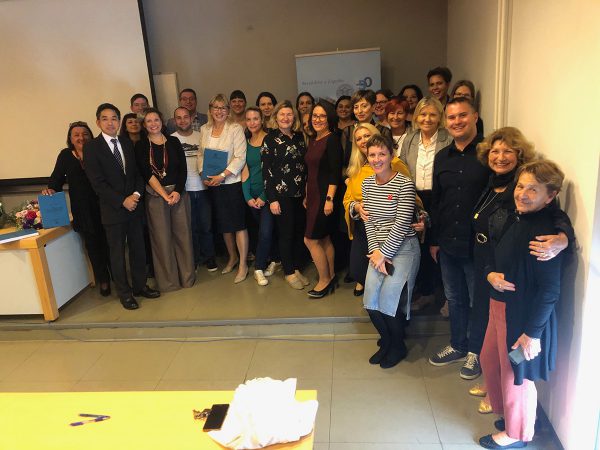Title: Interactions of surfactants in
detergent solutions
Project type: Bilateral projects with Slovenia
Croatian coordinator: Prof. Tanja Pušić, PhD
Slovenian coordinator: Barbara Simončić
![]()
Project Summary:
Detergents contain surfactants (surfactants) which act synergistically with the remaining components, and provide satisfactory performance in the wash. Hydrophilic groups determined group of surfactants and their specific properties in aqueous solutions. During the cleaning surfactants are adsorbed on the surface, where they can interact: surfactant-surfactant, surfactant-surfactant-fiber and dirt. The mechanism of adsorption and the strength of interaction depends on ionogene and structure of surfactants, their concentration, type and composition of the dirt, the charge on the fiber surface functional groups conditioned, and the washing conditions (pH, temperature, electrolyte supplement). Most textile fibers are negatively charged in neutral and alkaline aqueous solutions.
Negatively charged anionic surfactants are adsorbed on the textile fibers and dirt particles, thereby increasing the electrostatic repulsive interaction and facilitate the removal of dirt from the fiber surface. At the same time to prevent re-deposition of dirt particles from the bath to the fiber (redeposition). Nonionic surfactants also help to remove dirt and keep them in baths thanks moisturizing protective shell. Modern detergent formulations with anionic and nonionic, cationic modified to contain compounds that are in the bath for washing time released and contribute to a soft touch, the degree of disinfection machine, while they do not interfere with anionic surfactants.
As part of this project will explore the interaction of surfactants in the bath to wash with will vary different parameters: ionogene, hydrophobic part of the concentration of surfactant, the composition of dirt, pH and composition of textiles.
Strength of the surfactant-surfactant interactions will be studied by potentiometric titration using ion selective electrode (ISE) and the membrane. First, they will work on clean systems, and will later be introduced the remaining components.
Interactions of surfactant-debris will be analyzed spectrophotometrically by measuring the remission soiled, washed and ballast material. These interactions will be studied without the presence of fabric using potentiometric titration.
Removing stains depends on the hydrophobicity and swelling of textile materials in the detergent solution. For these purposes swelling of textile materials will be explored and water retention through value WRV (Water Retention Value), power measurements, and surface charge of selected textiles. Based on these studies will agree that a mixture of surfactants in synergy with other components, can provide effective removal of dirt and high whiteness and white, and the freshness of tone colored textiles. This study covers the technological, environmental and economic aspects.
![]()

